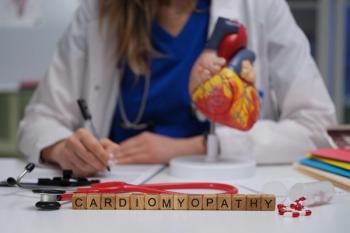
Direct Medication Adherence Measures Actionable with Technology
New technologies are eliminating the need for physical presence in directly observing adherence.
Measures of medication adherence are generally classified as either direct or indirect. Examples of direct measures include observing patients taking their prescribed dose or measuring the blood levels of a particular medication.
Although these measures are more accurate than indirect ones, they’re rarely feasible for any given population, and so the more commonly used adherence measures fall under the indirect umbrella. Examples include patient-reported adherence through interview or diary, pill counts, or measures based on prescription claims data, medication possession ratio (MPR), and proportion of days covered (PDC).
The question is, are we measuring adherence with MPR and PDC, or are we measuring refill behavior?
MPR and PDC don’t really tell us how patients take their medications day in and day out (or day on and day off). Is the patient taking it in the correct amount at the right time with the right frequency and under the right conditions? MPR and PDC can’t tell you that.
Add to this drawback that a pharmacy’s refill policy can impact MPR and PDC calculations. For example, a pharmacy that automatically ships the next refill without consulting with the patient could easily drive up its population’s adherence based on MPR or PDC, while a pharmacy that waits for a patient to initiate the next refill would naturally have a lower MPR or PDC.
Wanting to find out what happens between refills brings us to technology.
Technology-based adherence solutions that combine the accuracy of direct observance with the low resource burden associated with indirect measures like MPR and PDC are coming to the market. Two examples to highlight are SMRxT and AiCure.
SMRxT provides a clinical program using advanced wireless technology to monitor patient adherence. It has developed a real-time, data-driven solution that allows pharmacies to fully understand and manage a patient’s adherence challenges.
The patient isn’t required to set anything up because the system is programmed for the per-unit weight of the medication being dispensed before it’s sent to the patient. Each time the patient takes medication, the sensor records the time of the dose and number of tablets taken and posts it to the patient’s medication adherence record.
The patient’s adherence data and record is available for health care providers to view through a secure website. Patient preferences can be set up so that they and/or their caregivers receive e-mails or text messages to remind them when it’s time to take a dose or alert them when they’re missed one.
AiCure goes a different route, using facial recognition and motion-sensing software on mobile devices to confirm medication ingestion. With the use of artificial intelligence (AI), no human review is necessary.
The app reminds patients about their upcoming dose and asks them to use the smartphone camera to record and confirm ingestion. The app can also deliver educational content and incentives directly to the patient. Real-time data is available for immediate intervention and tracking of patient adherence over time.
Other available adherence technologies include AdhereTech, CleverCap, DoseCue, and GlowCap. Each offers a means of measuring dose-by-dose adherence.
It’s true that these technologies all come with an additional cost, but it may be offset by savings and/or improved outcomes. For example, some payers are sending nurses to patient homes to directly observe daily doses of costly hepatitis C medications. As another example, some pharmacies are contacting patients daily or weekly to check-in and ensure therapy is going smoothly.
With the help of adherence technologies like SMRxT and AiCure, processes like these may be changed from a full-time job for many to a part-time job for one. Plus, that job would change from a little bit of time for all patients to sufficient time for select patients.
Perhaps more important than getting an accurate reading on medication adherence is being able to react to data that you never had in the first place. Many medications that will be deemed good candidates for these technologies at first will be high-cost and possess a high risk of discontinuation.
Without these technologies, pharmacies often discover that a patient has discontinued therapy when it’s too late to intervene, like at the end of the month when attempting to set up a refill. With these technologies, however, pharmacies would know when patients cease to take their dose, be able to contact them right away, and potentially resolve an adherence barrier such as a side effect that’s deterring them from continuing therapy.
The same benefit applies to medications with very low forgiveness for nonadherence, such as therapies for hepatitis C. A patient missing just a few doses is at risk for treatment failure—something that may translate to medication waste of $30,000 or more. Again, these technologies would allow for immediate intervention and help prevent cases of failed therapy.
Although these direct-measuring technologies add some cost to patient management, they would pay for themselves and even lead to a cost avoidance for high-risk medications today. It’s clear that these technologies are here to stay and their role in health care will continue to expand, especially as resultant evidence-based improvements in adherence are published.
Newsletter
Stay informed on drug updates, treatment guidelines, and pharmacy practice trends—subscribe to Pharmacy Times for weekly clinical insights.







































































































































































































